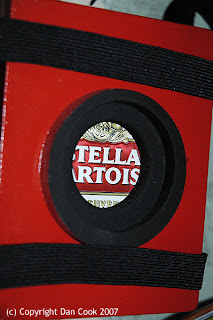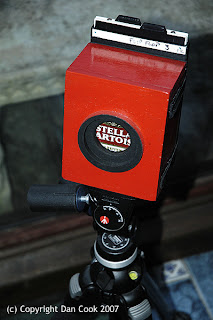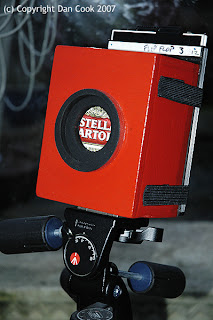


I started reading about pinhole cameras and their resurgence in popularity around 2002. A number of photographic publications started covering guys and girls who would labour over four or five hour exposures with laser cut equipment.
I suppose the thing that attracted me was the aperture. Normal glass lenses typically have variable apertures made from blades. Most photographers learn this VERY early in their hobby or career. These lenses have shallow depths of field at one end, and get sharper through to the higher numbered f stops. Thats it simply put at least.
With pinhole cameras the hole for the light to pass through is so small that so little light actually enters. The f stop number can be as high as the two hundreds. There are a range of brass etched pinhole lenses where they go to f230 but I fancied making my own. Looking on various forums, blogs and videos at the time I figured all I really needed were these:
- some aluminium plate - I used an old beer can (a brand my friend always called "Wife Beater" for some reason)
- some kind of box - decided to construct my own for ease
- some way of mounting it on a tripod - an old iron mongers sold me some glue-in tripod sockets via mail order
The shallower the box the wider angle the image. The smaller the hole mixed with the large the imaging surface then the sharper the image - this is why I went with a few centimeters deep with a 5x4 film holder strapped on the back.
Oh and in case you're wondering - the paint is "fire engine red" enamel. Actually used for painting toy fire engines! You cant get it anymore as far as I am aware.
I did take a few images on Ilford 400 and 50 iso mono film just after construction. Actually I made 2 duplicates! But the scans have been lost to the sands of time, as have the negatives. I used some bluetak to seal the hole when not taking a photo. The lens was made sharper and smaller by filling the hole with black acrylic paint and then poking a hole with a fine needle. This was allowed to dry before using a slightly more dilute paint to cover the hole and I then blew through it to clear the centre.
I'd like to play with these again at some point, but to be honest DSLRs have their own allure.

